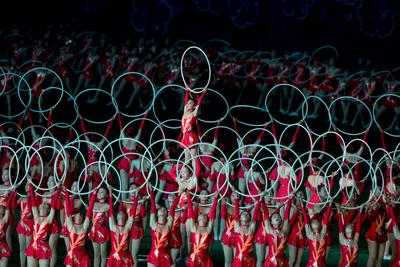Since 2005, Chinese leaders have created an array of financial and political incentives to encourage Chinese companies to invest in and trade with North Korea, encapsulated by the phrase ‘government guidance with companies in the lead; market-based operations and mutual benefit’.
Trade levels rose from US$1.58 billion in 2005 to US$5.6 billion in 2011, representing nearly 70 per cent of all North Korea’s foreign trade. China’s direct investment stock in North Korea now exceeds US$300 million.
Most importantly, interactions between Chinese and North Korean border traders, businesspeople, workers, students, tourists and local officials have dramatically expanded. These exchanges are beginning to influence North Korean economic institutions, external interactions and local markets.
For instance, in 2010 North Korea and China established two new joint economic development zones near the Chinese border. The projects are designed to attract Chinese investment by capitalising upon inexpensive North Korean labour and ready access to Chinese markets. These policies are similar to those of China’s when it implemented special economic zones (SEZs) during its own reform process.
While their economic success has been limited, the zones have encouraged greater cross-border cooperation among local officials. Seeking to attract Chinese capital, local North Korean officials have removed longstanding restrictions that previously impeded these interactions. Tourism provides a striking example. Chinese tourists now enjoy visa-free travel to five North Korean cities, and can even drive their own cars directly across the eastern border to the Rason SEZ.
A similar trend is emerging on the western border. China’s Dandong city is the most vibrant channel for trade, investment, and human flows in and out of North Korea — an estimated 70 per cent of bilateral trade goes through Dandong. The Dandong Party Secretary Dai Yulin proudly points out that ‘[t]he first-ever cell phone taken into North Korea was by the chief representative of a Dandong trading company. Now the number of cell phones going from Dandong into North Korea is in the millions’.
In 2009, North Korea established a consulate in Dandong to manage the burgeoning number of North Koreans living, working and visiting Dandong on a regular basis. Local officials have also reached a number of working-level accords, such as an October 2012 agreement to ‘promote labour exchanges on the basis of mutual needs’.
As North Korea’s ‘second economy’ continues to expand, Chinese influence is pervasive. Many open market transactions are conducted in Chinese RMB. The price of rice in North Korea’s border markets is similar to Chinese prices, reflecting close economic ties. A de-facto commercial housing market has emerged near the Chinese border for properties with access to Chinese cellular service or cross-border trade. Collective farms and smaller cities near the Chinese border are experimenting with more market-oriented activities.
As one Chinese expert recently told me, ‘[i]nteractions with China are changing the mindsets in North Korea. They are learning what a market economy is and how it operates. They now know what trading standards are, how you do trade, and other fundamentals’.
Of course, the primary drivers of this process are domestic. Economic deprivation has spawned private markets through a dynamic of ‘marketisation from below’. Failed efforts to ‘attack the market’, most notably the disastrous currency reform of 2009, also gave the leadership some leeway to pursue more market-oriented policies.
China’s influence complements these dynamics. It emboldens local experiments, offers an alternative economic model, and provides the goods, capital and markets essential for their success. In turn, local successes encourage political elites to pursue further reform and engagement — precisely the political dynamic underpinning China’s own early economic reforms.
Studies of China’s economic influence within North Korea generally range from sceptical to hostile. Some experts insist that China’s trade and investment has enabled Pyongyang to avoid undertaking economic reforms while others blame Beijing for undermining international sanctions and encouraging North Korea’s nuclear weapons program.
While Chinese leaders insist that they continue to implement UN sanctions against North Korea’s nuclear program, most notably evidenced with the recent release of a 236-page list of items banned from export to North Korea, they also maintain that ‘normal economic interactions’ with North Korea should remain unobstructed.
They have a point.
Policymakers in Seoul, Washington, Canberra and elsewhere should consider adopting a more positive approach toward China’s economic engagement with North Korea. Indeed, given North Koreans’ longstanding distrust of China, and deep anxiety about dependence upon China, the deepening economic ties may actually encourage Pyongyang to reach out beyond China.
The case of Myanmar, where deepening economic dependence upon China spurred renewed interest in broadening diplomatic and economic ties, is instructive. In this sense, the greatest impact of China’s sunshine policy may be yet to come.
James Reilly is a Senior Lecturer in the Department of Government and International Relations at the University of Sydney.
This article is a summary of a presentation delivered at this year’s Korea Update, an annual conference organised by the ANU’s Korea Institute.

